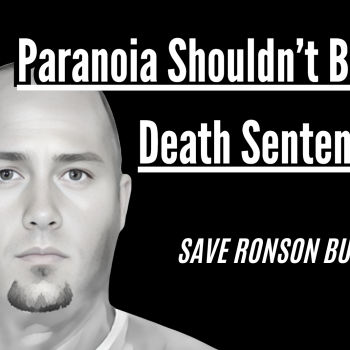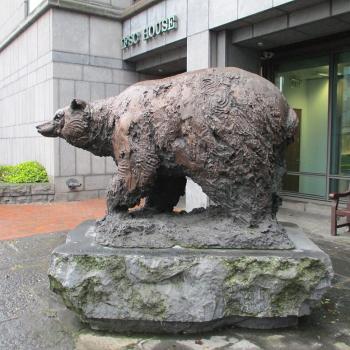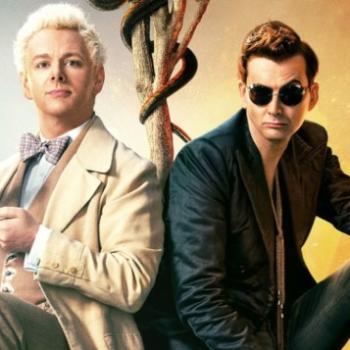Frankenstein (the popular 19th century novel and the popular 20th century Universal monster movie series) also exploits the fear of the other, the beast who seems human but isn't, and who menaces white womanhood. In both the best films, Frankenstein (1931) and Bride of Frankenstein (1935), Frankenstein's monster is represented as a danger to femininity. In a scene in the original film, he menaces Elizabeth (Mae Clark), the camera cuts away, and we return to Elizabeth moaning, disheveled and with torn clothing, on her bed—a representation, Poole suggests, of interracial rape. In the later Bride of Frankenstein, the bride (Elsa Lanchester) chooses death over violation by this monstrous Other, and the narrative twists and imagery directly echo a similar choice made in D. W. Griffith's racist epic Birth of A Nation (1915).
Films from the 1960s, 1970s, and later reveal a fear of the sexual permissiveness unleashed by the Pill, and of liberated women. From Rosemary's Baby (1968) to The Exorcist (1973) to the slasher films of the late seventies and eighties, horror films wrestled with the problem of women's unleashed sexuality. As Poole points out, "Women's sexuality and reproductive abilities became the focus of numerous horror . . . exposing America's nervousness over contraception, abortion, the sexual revolution, and the changing nature of the family." Movies such as the highly-sexualized Alien (1979), in which the monster Alien is represented as feminine (it implants its young in males, which "outrages the male body, literally tearing it to pieces") offered a critique of American woman's liberation, balanced by the strong female character Ripley (Sigourney Weaver), who becomes more and more mother-ized as the series goes on—a Mama Bear, in Sarah Palin-land.
Likewise, the slasher films, in which sexualized teenagers are always the first victims of the killer, are part of a "conservative critique of women to domesticate themselves fully. . . . Monsters, either as home invader, babysitter, or bad mother, suggested that women's liberation threatened the very lives of America's children."
Finally, the wave of zombies in books, movies, and television represents our fears that we are headed to hell in a hand basket. The rising tides of discontent—witness the recent figures in TIME that overwhelmingly suggest America is in decline or headed in the wrong direction—are increasingly represented by the mindless zombies of Dawn of the Dead onward, The Walking Dead in both comics and TV, and are a cultural reflection on "historical horror and rapid social change," which we have certainly been witnessing over the past few decades. The zombie, Poole reflects, "symbolizes for many Americans the current state of their own society. . . . The hopelessness of the genre, with its images of civilization's dissolution, and human beings cannibalizing one another, represents a theme in American life since the 1960s."
As someone who writes, speaks, and teaches about the link between religion and culture, about the many ways that literature and pop culture are used in out society to make meaning, I can say that Monsters in America does a bang-up job of demonstrating how our culture helps us achieve some sort of understanding about our world and our lives. Poole's examples are well-chosen and well-explicated. It is a frightening world we live in, yet the horrific things in our literature and culture play a vital part in helping us reach some understanding, and even some peace about them.
Happy Halloween, everyone. May your monsters be manageable, and your lives infused with the peace of Christ.





